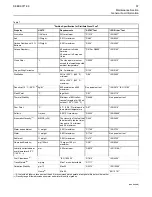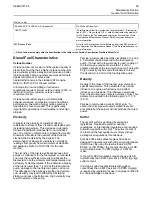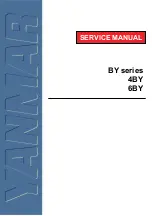
Maintenance intervals for engines that use
biodiesel
– The oil change interval can be adversely
affected by the use of biodiesel. Use oil analysis to
monitor the condition of the engine oil. Use oil
analysis also to determine the oil change interval that
is optimum.
Note: API FA-4 oil is designed for use in selected
on-highway applications and is NOT designed to
support off-road applications, including Perkins
Engines. DO NOT use API FA-4 oil for Perkins
engines. These engine oils are not approved by
Perkins and these engine oils must not be used:
CC, CD, CD-2, CF-4, CG-4, CH-4, and CI-4.
Lubricant Viscosity Recommendations
for Direct Injection (DI) Diesel Engines
The correct SAE viscosity grade of oil is determined
by the minimum ambient temperature during cold
engine start-up, and the maximum ambient
temperature during engine operation.
Refer to illustration 62 (minimum temperature) to
determine the required oil viscosity for starting a cold
engine.
Refer to illustration 62 (maximum temperature) to
select the oil viscosity for engine operation at the
highest ambient temperature that is anticipated.
Generally, use the highest oil viscosity that is
available to meet the requirement for the temperature
at start-up.
Illustration 62
g03329707
Lubricant Viscosities
Supplemental heat is recommended for cold soaked
starts below the minimum ambient temperature.
Supplemental heat may be required for cold soaked
starts that are above the minimum temperature that
is stated, depending on the parasitic load and other
factors. Cold soaked starts occur when the engine
has not been operated for a period of time. This
interval will allow the oil to become more viscous due
to cooler ambient temperatures.
Aftermarket Oil Additives
Perkins does not recommend the use of aftermarket
additives in oil. Aftermarket additives are not
necessary to achieve the engines maximum service
life or rated performance. Fully formulated, finished
oils consist of base oils and of commercial additive
packages. These additive packages are blended into
the base oils at precise percentages to help provide
finished oils with performance characteristics that
meet industry standards.
There are no industry standard tests that evaluate
the performance or the compatibility of aftermarket
additives in finished oil. Aftermarket additives may
not be compatible with the finished oils additive
package, which could lower the performance of the
finished oil. The aftermarket additive could fail to mix
with the finished oil. This failure could produce sludge
in the crankcase. Perkins discourages the use of
aftermarket additives in finished oils.
To achieve the best performance from a Perkins
engine, conform to the following guidelines:
• See the appropriate
“
Lubricant Viscosities
”
. Refer
to the illustration 62 to find the correct oil viscosity
grade for your engine.
SEBU9071-06
81
















































